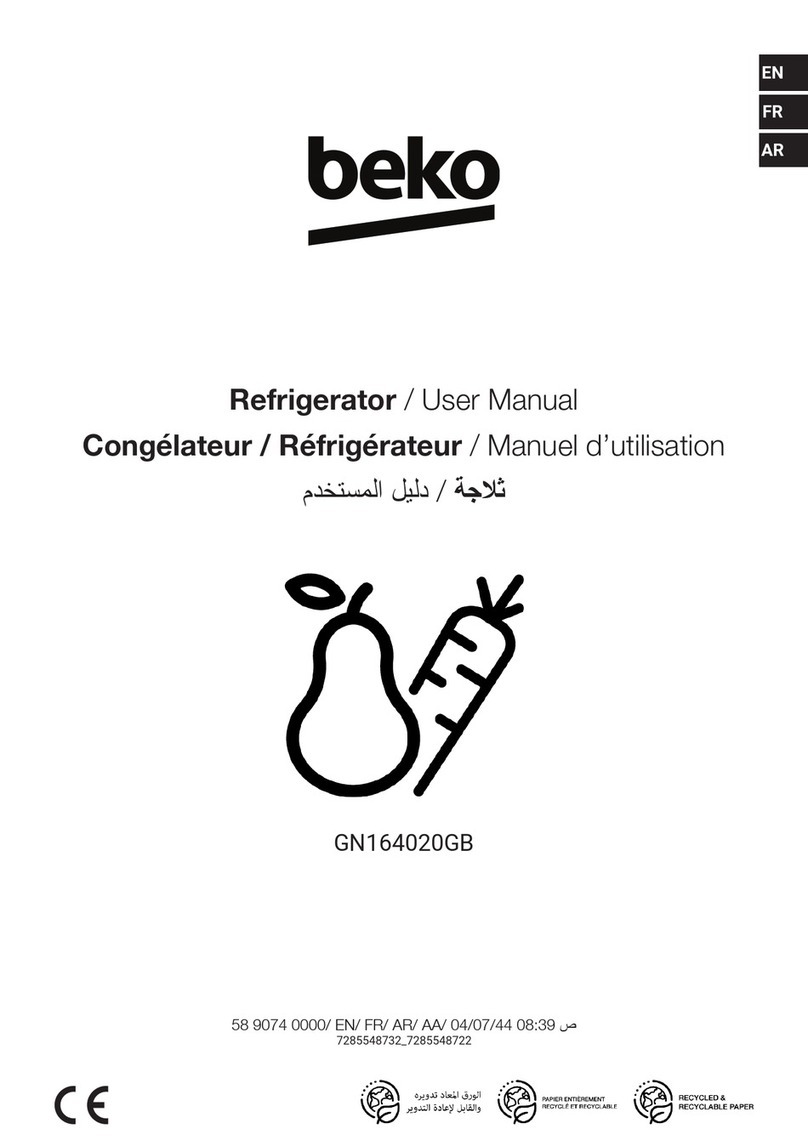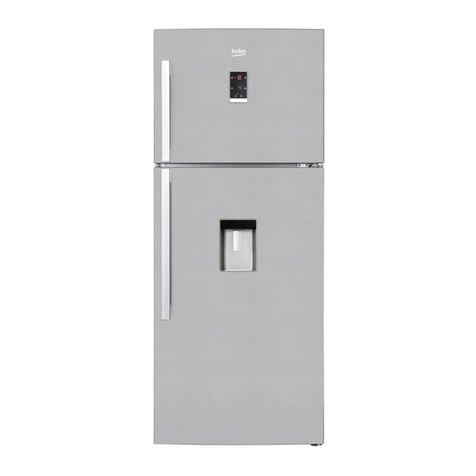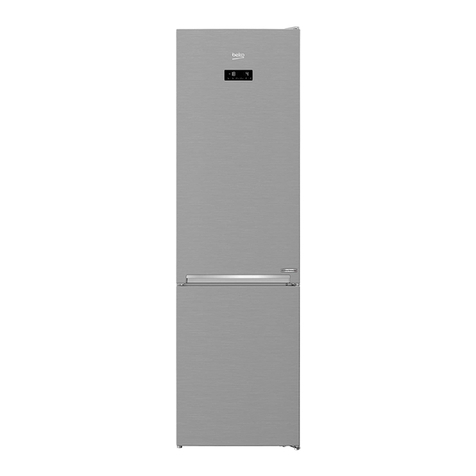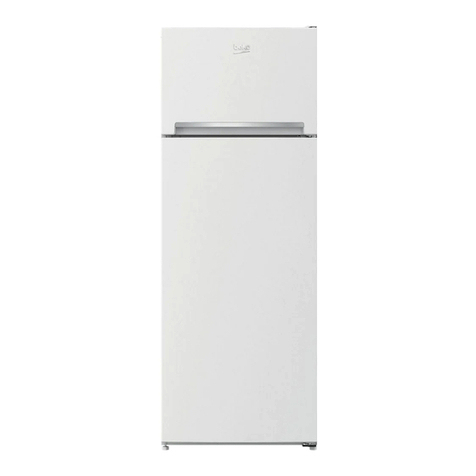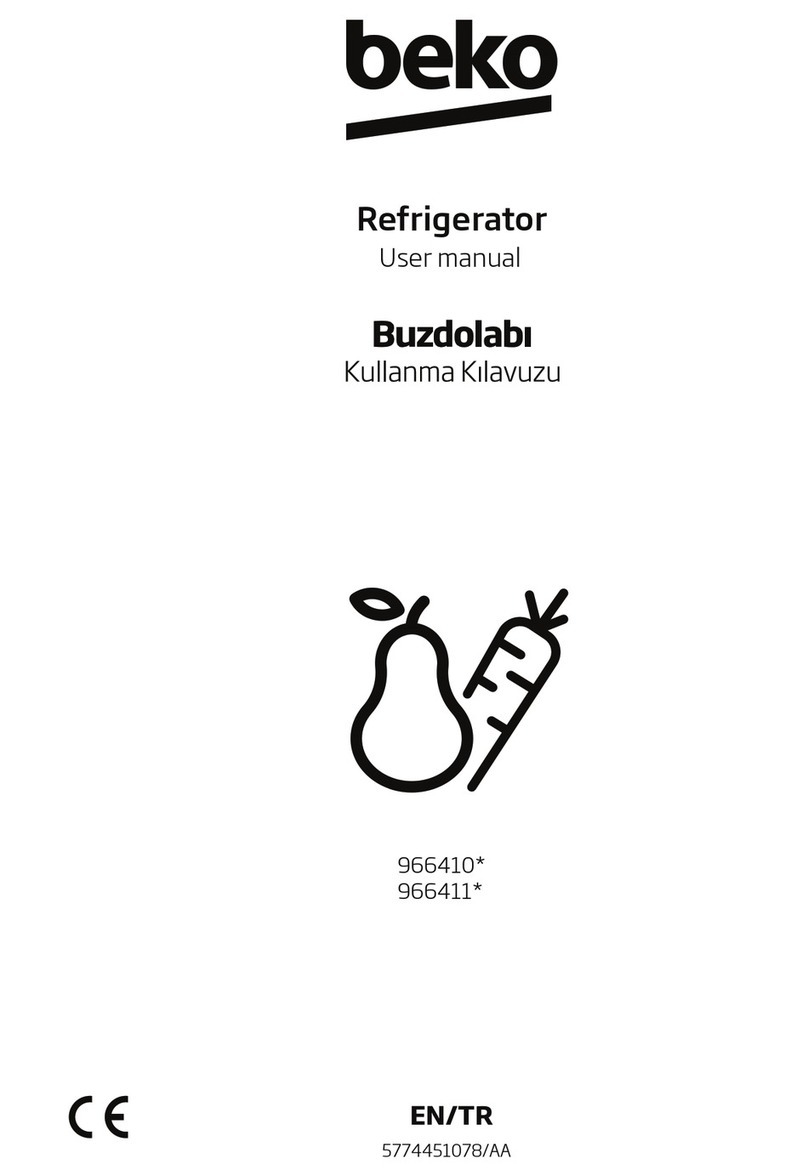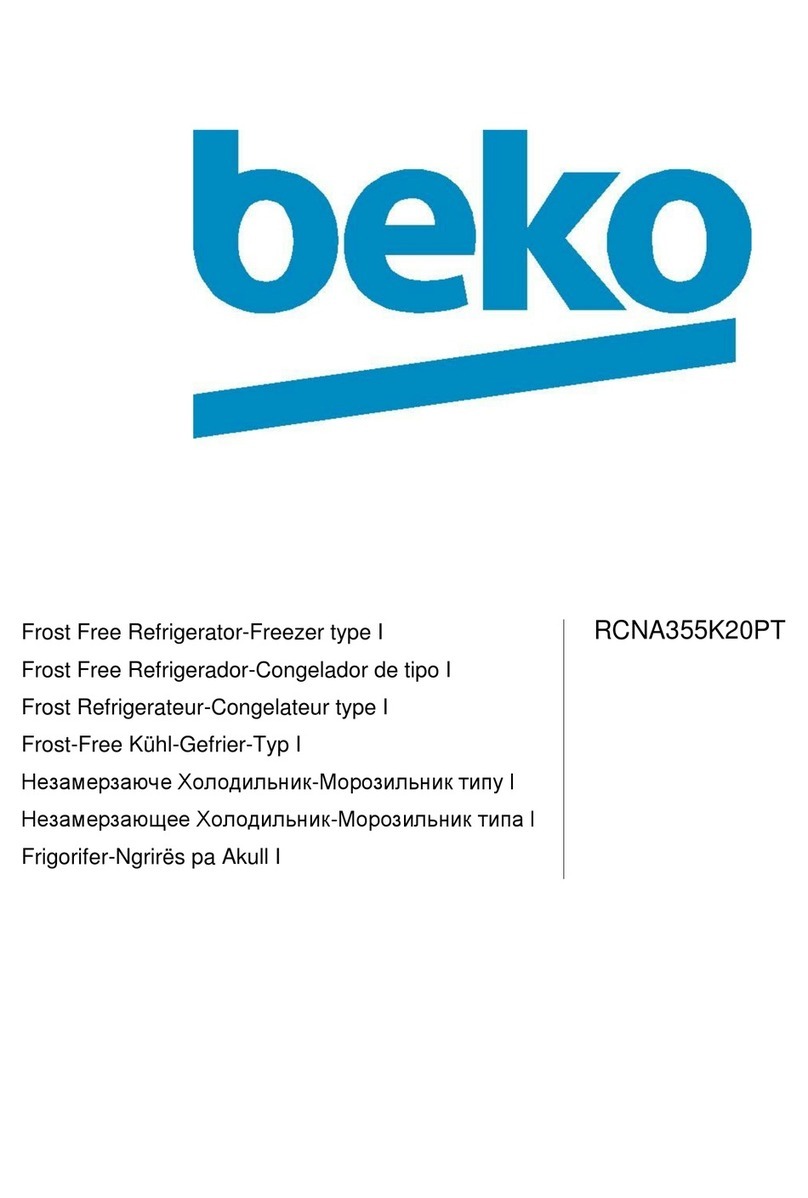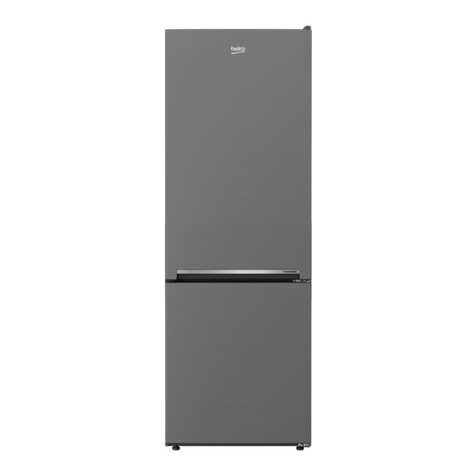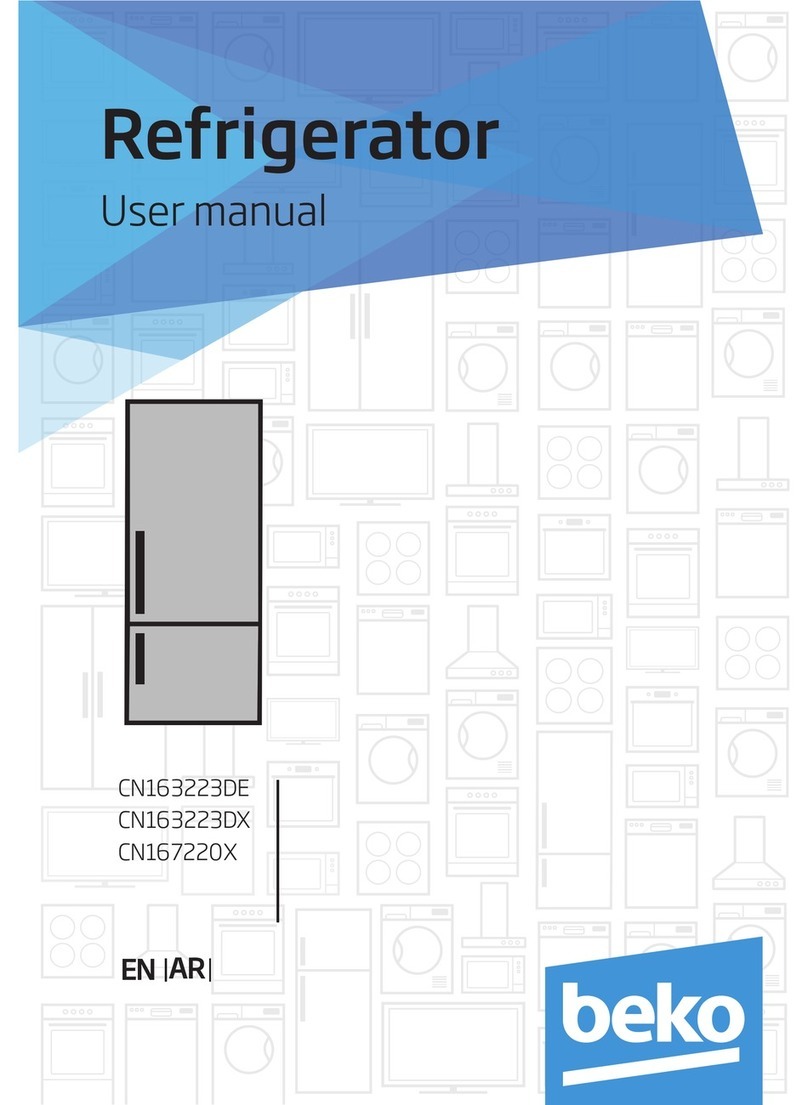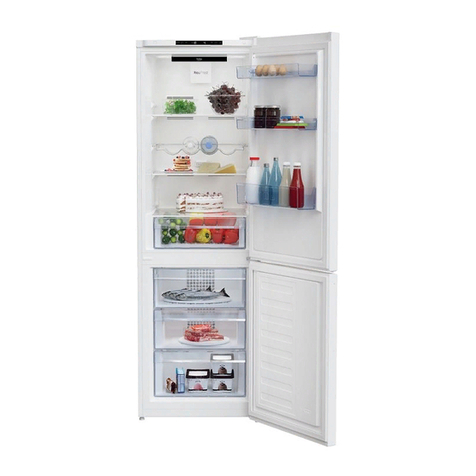
EN
8
3Installation
BIn case the information which are
given in the user manual are not
taken into account, manufacturer
will not assume any liability for this.
Points to be paid attention
to when the relocation of
the refrigerator
1. Your refrigerator should be
unplugged.Before transportation of
your refrigerator, it should be emptied
and cleaned.
2. Before it is re-packaged,
shelves, accessories, crisper, etc.
inside your refrigerator should be
fixed with adhesive tape and secured
against impacts. Package should be
bound with a thick tape or sound
ropes and the transportation rules
on the package should be strictly
observed.
3. Original packaging and foam
materials should be kept for future
transportations or moving.
Before you start the refrigerator,
Check the following before you
start to use your refrigerator:
1. Attach 2 plastic wedges as
illustrated below. Plastic wedges
are intended to keep the distance
which will ensure the air circulation
between your refrigerator and the
wall. (The picture is drawn up as a
representation and it is not identical
with your product.)
2. Clean the interior of the
refrigerator as recommended in the
“Maintenance and cleaning” section.
3. Connect the plug of the
refrigerator to the wall socket. When
the fridge door is opened, fridge
internal lamp will turn on.
4. When the compressor starts to
operate, a sound will be heard. The
liquid and gases sealed within the
refrigeration system may also give
rise to noise, even if the compressor
is not running and this is quite normal.
5. Front edges of the refrigerator
may feel warm. This is normal. These
areas are designed to be warm to
avoid condensation.
Electrical connection
Connect your product to a grounded
socket which is being protected by a
fuse with the appropriate capacity.
Important:
The connection must be in
compliance with national regulations.
• The power plug must be easily
accessible after installation.
• Electrical safety of your refrigerator
shall be guaranteed only if the earth
system in your house complies with
standards.
• The voltage stated on the label
located at left inner side of your
product should be equal to your
network voltage.
• Extension cables and multi plugs
must not be used for connection.
BA damaged power cable must be
replaced by a qualified electrician.
BProduct must not be operated
before it is repaired! There is the risk
of electric shock!
